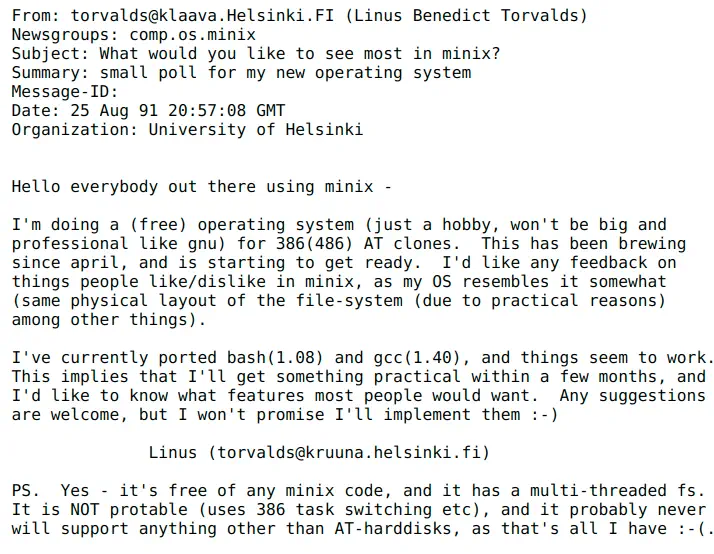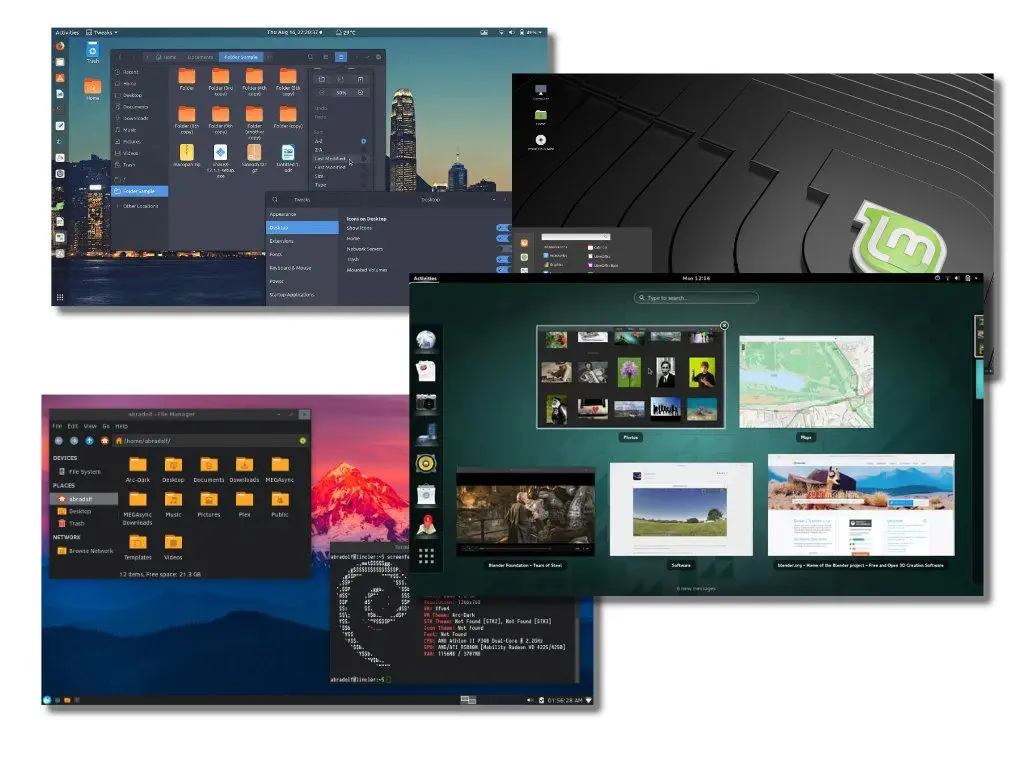All the years of Windows and MacOS have been a cavalcade of viruses, security holes, updates, drivers and license keys. And, the strange feeling of paying for the hardware while handing over control of the computer to a multinational company.
The now fairly famous Linus Torvalds started building his own operating system Freax in 1991. He considered calling it something with Linus, perhaps Lin.....ux, but maybe he felt that would be too much ego. Here's Linus's first email telling us what he has going on:

Fortunately there was Ari Lemmke who wrote the FTP server for Freax. He nailed Linux as the name. Good one, Ari. Freax would probably have been hard to introduce at board level in Fortune 500 companies.
Today, 70% of all servers at Intenet are Linux-based. On the workstations, the desktop, it's not as exciting; 3.4% use Linux on their computer.
What fills me with wonder is that the Linux world is built on an idea that it should be free. Not free, but free as in a beer at the pub. If someone invites you for a beer, it feels good to offer it back. So, I have free access to the code. Linux kernel, drivers and everything else needed is freely downloadable. Here's Linus Torvalds' code library for example. It's the actual code he wrote.

With access to the code itself, others can modify what exists, or build something new. It's also possible to check for security gaps or vulnerabilities - openness and transparency provide security.
But you can't sit on things under your own copyright, everything you do becomes GPL-licenced. The code I create belongs to everyone else who uses Linux in any form - in the same way that I can take part in other people's work.
Openness results in a tremendous amount of variation and customization. Mathematics, media production, AI, office environment - for every use case there is an optimized Linux configuration.
Windows and MacOS have one interface. Linux creates hundreds of different interfaces using window managers, icons and fonts - all controllable down to the last detail.
It gets a bit messy to keep track of everything, and of course it should be called something geeky; Gnome, XFCE, i3, OpenBox, Mint, Gala, Arch, Kali, Fluxbox, KDE. This is what a desktop can look like:

Linux started as a server operating system, so the text-based console is powerful. The graphical desktop is just a prettier version of the console.

Linux is built around a set of simple commands that:
- Perform a single task
- Perform the task very efficiently
- Perform the task in a low-key way
Especially the last one is a bit tricky, but what the philosophy results in you can see when you try it; getting something done with a computer becomes smooth, uncomplicated and above all fun.